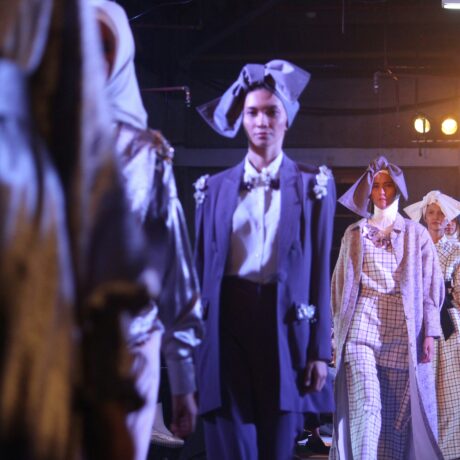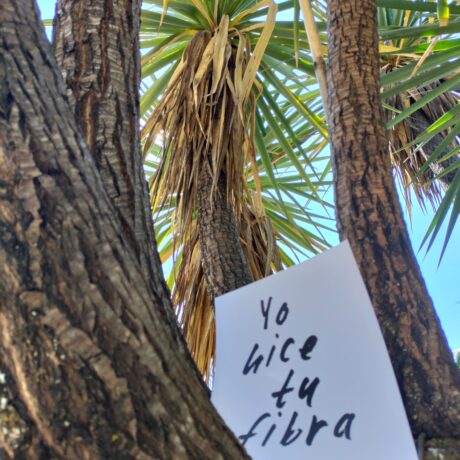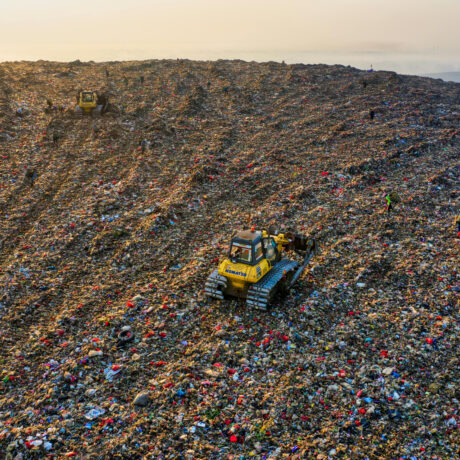Four future fabrics transforming textiles for the better of the planet
This article was written by Okezue Bell, a Nigerian-American student and STEM inventor. Bell hosts STEM and education workshops with the UN and local organisations and mentors young people globally. He has worked with brands on scaling climate consumption to Gen Z and was recently appointed as a 2023 Climate Global Goals ambassador for the United Nations Association.In today’s day and age, beauty is no longer pain. Convenience and comfort are everything, especially in fashion; clothing is optimised to fit the latest trends and be readily accessible. When first impressions are often initially based on appearance–especially when it comes to youth–shoes, shirts, pants, and skirts become that much more critical. We shop in a world where everything is fast-paced and disposable–but at what cost? Well, all we have to do is take a look at the numbers: with Gen Z’s $360 billion purchasing power, we make up nearly 40% of all textile consumers, which contributes to almost 1.48 billion metric tons of global CO2 emissions yearly [1]. Coupled with the mounting concerns for the human rights of garment workers, particularly those in Eastern and Southern Asia, it becomes clear that fashion is anything but convenient, sustainable, or ethical, especially when it comes to the planet and those working in the industry on-ground. However, with Gen Z becoming increasingly alarmed by the climate crisis and looking for more sustainable clothing items, technology has emerged as a saving grace. Let’s take a look at four new fabrics that are transforming textiles for the better of the planet and its people.
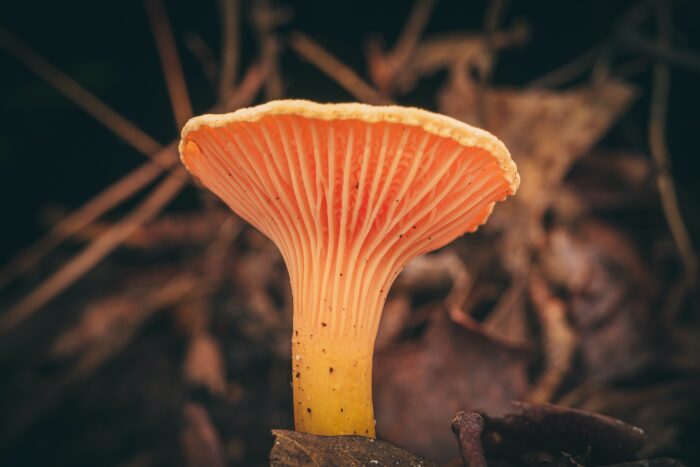
Mushroom-y Fabrics
At the heart of the fungi kingdom lies a hidden hero: mycelium, the root-like structure of mushrooms that spreads its spidery threads beneath the earth’s surface. This complex network is more than just a fungal footprint; it’s a bustling hub of biological activity, breaking down organic matter and turning it into nutrient-rich soil. But here’s the game-changer: scientists and fashion gurus are now harnessing this natural decomposer, turning it into a sustainable source for textiles.
The process, while intricate, is surprisingly straightforward. Mycelium is grown on a diet of organic waste, taking shape in vast cultivation trays. For weeks, it expands, weaving a dense network of fibres that can be harvested, treated, and finally, transformed into a material remarkably similar to leather. The result? A versatile, durable, and most importantly, sustainable fabric that could revolutionise the fashion industry.
And the numbers are equally promising. A 2018 study found that mycelium-based materials have a CO2 equivalent footprint up to 40 times lower than cattle leather and nearly half that of synthetic leather [2]. With the fashion industry responsible for 10% of annual global carbon emissions [3], the potential impact of mycelium-based textiles could be significant.
Indeed, the promise of mycelium has not gone unnoticed by the fashion industry. Pioneering companies like MycoWorks and Bolt Threads are redefining the boundaries of sustainable fashion with their mycelium-based textiles.
California-based MycoWorks, for example, uses a patented process to grow mycelium into a material they call Fine Mycelium™. This material can be customised to different thicknesses, textures, and levels of durability, which can be adapted to various fashion needs. The company’s groundbreaking technology caught the eye of the luxury sector when they collaborated with a luxury brand to create the world’s first bag made entirely from mycelium-based leather [4].
On the other hand, Bolt Threads, another pioneer in the field, has developed Mylo™, a mycelium-based material that closely mimics the properties of animal leather. They’ve already made significant strides, partnering with major brands to create prototype products, marking an important step towards mainstreaming this sustainable material [5].
Colourful Bacteria
In the realm of sustainable fashion, it’s not just about the fabric – the dyes matter too. Traditional dyeing processes often involve toxic chemicals and vast amounts of water, making them a significant environmental concern. Enter Streptomyces coelicolor, a soil-dwelling bacterium with the potential to revolutionise the textile dyeing process. This remarkable microbe produces a rainbow of pigments as part of its normal life cycle, from vibrant blues and reds to subtle yellows [6].
Scientists have found a way to harness these natural pigments, fostering the bacteria in a nutrient-rich medium. As the bacteria multiply, they secrete pigments that can be collected and used to dye textiles, completely bypassing the need for harmful synthetic dyes. This innovative process promises a significant reduction in the environmental footprint of textile dyeing.
One company leading the charge in microbial dye technology is Colorifix. Using a similar process to that of Streptomyces coelicolor, they’ve genetically modified microbes to convert sugar into pigments, which are then fixed onto fabrics without the need for heavy metals or complex chemical mordants. This process requires up to 10 times less water than traditional dyeing methods and produces minimal wastewater [7].
Meanwhile, design agency Faber Futures is using Streptomyces coelicolor to not just dye fabrics but to create them. Their project, “Colour Coded,” explores the potential of using bacterial pigments to pattern textiles, weaving sustainability and design into a single, seamless process [8].
This innovative use of bacterial pigments is making the fashion industry not just more colourful, but significantly greener. With these developments, we step into a future where the vibrancy of our clothes is matched only by the sustainability of their production.
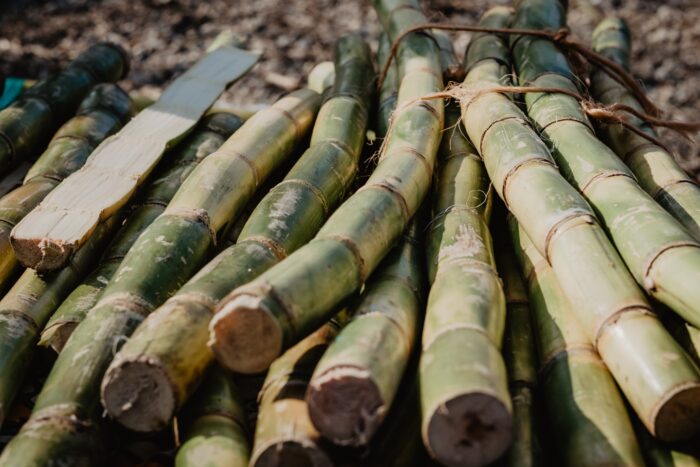
Sugar Sweet Rubber
When we think of sugar cane, sweet treats probably come to mind before sustainable fashion. Yet this humble plant is making big waves in the industry, specifically in the form of sugar cane rubber. This bio-based alternative to conventional rubber is derived from the juice of the sugar cane plant, which is fermented and distilled to produce ethanol. This ethanol is then converted into ethylene, a key ingredient in the production of rubber [9].
The benefits of sugar cane rubber are multi-faceted. From an environmental perspective, sugar cane is a renewable resource that absorbs CO2 as it grows, which can help offset the carbon emissions from rubber production. Additionally, the process of making sugar cane rubber requires less energy compared to traditional methods, resulting in lower greenhouse gas emissions [10].
From a worker’s rights perspective, sugar cane cultivation can be a more sustainable option. Many countries that produce sugar cane have established labour laws and regulations to protect workers, in contrast to the often hazardous conditions faced by workers in the traditional rubber industry.
The move towards sugar cane rubber is an exciting step towards more sustainable fashion. It’s a testament to how creativity and innovation can transform something as simple as a sugar cane stalk into a tool for environmental change.
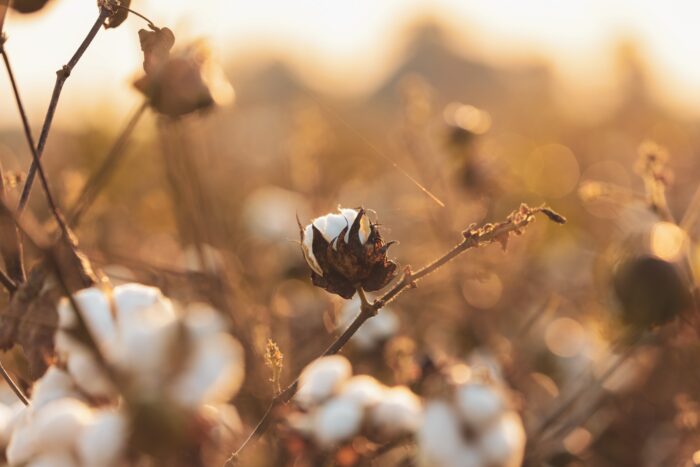
(Un)Conventional Crops
When it comes to sustainable fashion, there’s a lot to be said for going back to basics, and organic cotton is a prime example. This natural fibre is grown without harmful chemicals, using methods and materials that have a low environmental impact. It’s a shift away from conventional cotton farming, which heavily relies on water and toxic chemicals, contributing to water contamination and soil degradation [11].
Organic cotton farming takes a more holistic approach, focusing on replenishing and maintaining soil fertility while using less water, largely due to healthier soil having better water retention. This method also promotes biodiversity and builds biologically diverse agriculture, a stark contrast to the monoculture of conventional cotton farming [12].
The benefits of organic cotton extend to the people involved in its production as well. Farming without harmful chemicals means healthier soils, water, and workers. Moreover, many organic cotton farmers are part of cooperatives, where profits are shared, and farming practices are collectively decided, often leading to fairer wages and safer working conditions [13].
Organic cotton is a testament to the value of revisiting traditional farming methods in the pursuit of sustainability. It’s a reminder that sometimes, the most effective solutions are not about reinventing the wheel but respecting and working with the natural systems already in place.
Shaping the Future
Whew! We haven’t even covered everything here, like textiles made from oranges (yes, the fruit!) and soy-based fabrics. However, as we close our exploration of these five transformative fabrics, it’s clear that fashion’s future is evolving. It’s a future where the beauty of our clothing doesn’t come at the cost of our planet. It’s a future where fashion’s convenience and comfort extend beyond the wearer to include the hands that craft our clothes and the earth that yields the materials. In this new age, fast-paced and disposable are giving way to slow, mindful, and sustainable.
As consumers, particularly the youth with our substantial purchasing power, we hold the key to shaping this future. Our choices can fuel the demand for these innovative and sustainable materials, and also shine a light on those who have the moral burden of making up for the damage that’s been done: the brands themselves, who need to listen to their customers and change their business models. Consider opportunities like Fashion Revolution’s #WhatsInMyClothes campaign, which empowers citizens to ask brands what their clothes are made of and how they impact the environment.
The intersection of technology and sustainability has indeed proven to be fashion’s saving grace. Let’s continue to support, advocate, and if able, invest in these fabrics of the future, transforming not just our wardrobes, but our world, one thread at a time.
Take Action
Download a poster to ask #WhatsInMyClothes on social media
View this post on Instagram
References:
- Gen Z Has $360 Billion to Spend, Trick Is Getting Them to Buy
- Life Cycle Assessment of Mycelium-Based Leather
- UN Environment – Fashion Industry’s Carbon Impact
- Hermès Launches Bag Made of Lab-grown Mycelium Leather
- Adidas Partners with Bolt Threads
- Pigmented Antibiotics Produced by Streptomyces coelicolor A3(2)
- Colorifix Official Website
- Faber Futures – Colour Coded
- Sugar Cane Rubber – An Overview
- The Environmental Impact of Sugar Cane Rubber
- The Impact of Cotton on Fresh Water Resources and Ecosystems – WWF
- Why Organic Cotton – Textile Exchange
- Fair Trade Certified – Organic Cotton
Header image by Bryony Elena on Unsplash




